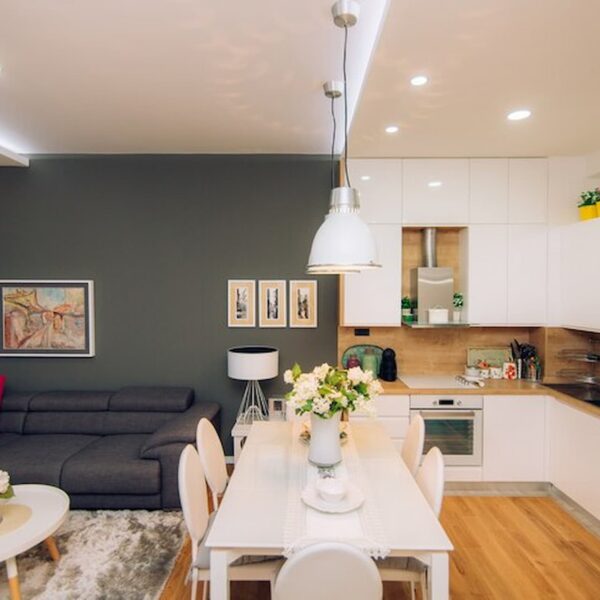Choosing the right ceiling light for your space can significantly impact the ambience and functionality of a room. Whether you’re renovating your home or simply looking to upgrade your lighting fixtures, the options can be overwhelming. Numerous factors must be considered, from size and style to brightness and energy efficiency. This article will delve into the intricacies of selecting the perfect ceiling light to illuminate your space, ensuring that form and function are seamlessly integrated.
Assessing Your Needs and Space
Before buying ceiling lights, it’s essential to assess your specific requirements and the characteristics of the room in question. Consider the purpose of the space—are you looking to create a cosy ambience in the living room, or do you need bright, task-oriented lighting for the kitchen? Additionally, take note of the room’s size, ceiling height, and existing décor. These factors will help narrow your options and guide you towards suitable choices.
Considering Aesthetic and Style
The aesthetic appeal of a 3 ceiling light is crucial in complementing your space’s overall décor and theme. Whether your style is contemporary, traditional, minimalist, or eclectic, there’s a ceiling light to suit every taste. Pay attention to factors such as materials, finishes, and shapes to ensure that the fixture seamlessly integrates with the existing design elements of the room. For instance, a sleek, metallic pendant light can add a modern touch to a minimalist interior, while a crystal chandelier can infuse classic elegance into a traditional setting.
Understanding Different Types of Ceiling Lights
Ceiling lights come in various styles and designs, each serving a different purpose and aesthetic appeal. Some common types include flush mount, semi-flush mount, pendant lights, chandeliers, and track lighting. Flush mount lights are ideal for low ceilings, as they sit close to the ceiling and provide uniform illumination. Semi-flush mount lights hang slightly lower, adding a touch of elegance while still offering ample overhead lighting. Pendant lights provide versatility and can be used as statement pieces or to highlight specific areas. Chandeliers exude sophistication and are perfect for formal dining rooms or entryways. Lastly, track lighting allows for adjustable directional lighting, making it suitable for highlighting artwork or accentuating architectural features.
Balancing Brightness and Energy Efficiency
Finding the right balance between brightness and energy efficiency is crucial in selecting an adequate ceiling light. LED lights are increasingly popular due to their longevity and energy-saving capabilities. Consider the room’s function and desired ambience when choosing the brightness level. Opt for brighter, daylight-toned lights for task-oriented areas like the kitchen or home office to enhance visibility and productivity. In contrast, warmer, dimmable lights are more suitable for creating a cosy atmosphere in living rooms or bedrooms. Additionally, installing dimmer switches allows greater control over the lighting intensity, enabling you to adjust according to different activities and moods.
Factoring in Ceiling Height and Room Size
Ceiling height and room size play significant roles in determining the appropriate type and size of ceiling light for your space. For rooms with low ceilings, such as basements or utility areas, flush mount or semi-flush mount lights are ideal as they provide ample illumination without intruding on headspace. Conversely, rooms with high ceilings offer more flexibility, allowing for the incorporation of statement pieces like chandeliers or pendant lights that can draw the eye upward and add visual interest. When considering room size, ensure that the scale of the light fixture is proportionate to the space—smaller rooms may benefit from multiple smaller fixtures or strategically placed recessed lighting to avoid overwhelming the area. In comparison, larger rooms can accommodate larger fixtures or combinations of lights to provide balanced illumination throughout the space.
Accounting for Functional Lighting Needs
In addition to considering the overall ambience and style of the room, it’s essential to address specific functional lighting needs when selecting a 3 ceiling light. Different home areas require varying levels and types of lighting to support various activities and tasks. For example, the kitchen may benefit from ambient lighting provided by overhead fixtures and task lighting focused on work areas such as countertops and stovetops. Similarly, bathrooms require bright, evenly distributed lighting for grooming tasks, while bedrooms may benefit from softer, dimmable lighting for relaxation and bedtime reading. By identifying the specific functions of each area within your home, you can choose ceiling lights that meet these needs while enhancing the overall functionality and usability of the space.
Conclusion
Selecting the right ceiling light for your space involves carefully balancing practicality, aesthetics, and personal preference. By assessing your needs, understanding the different types of ceiling lights, considering aesthetic and style elements, and prioritising brightness and energy efficiency, you can illuminate your space effectively while enhancing its overall ambience and appeal. Remember to take your time, explore various options, and seek professional guidance to ensure that your chosen ceiling light integrates with your interior design and meets your functional requirements.


Leave a Comment
You must be logged in to post a comment.